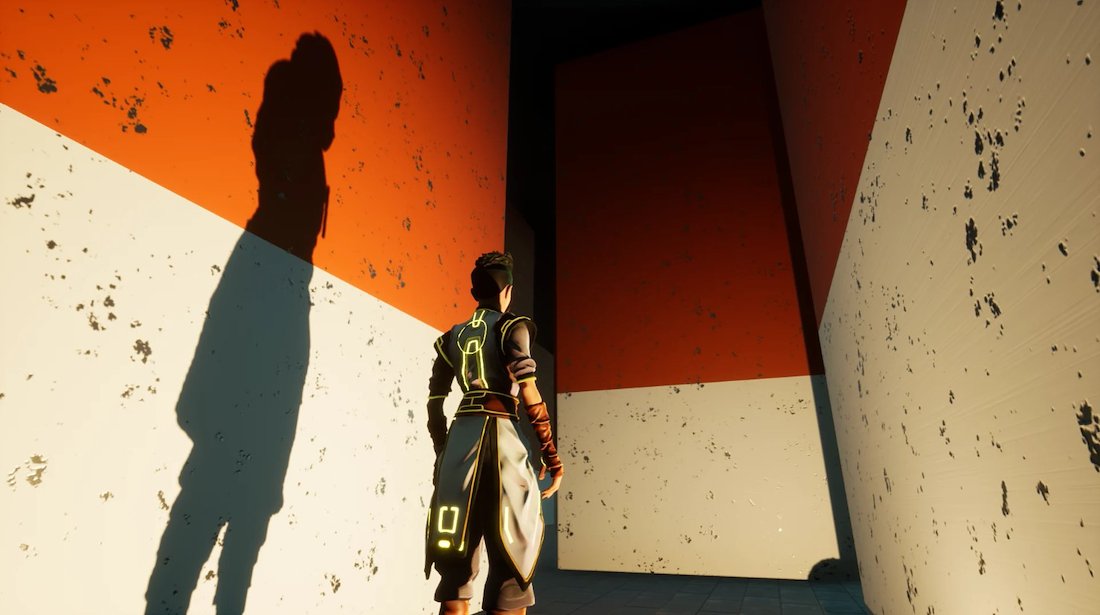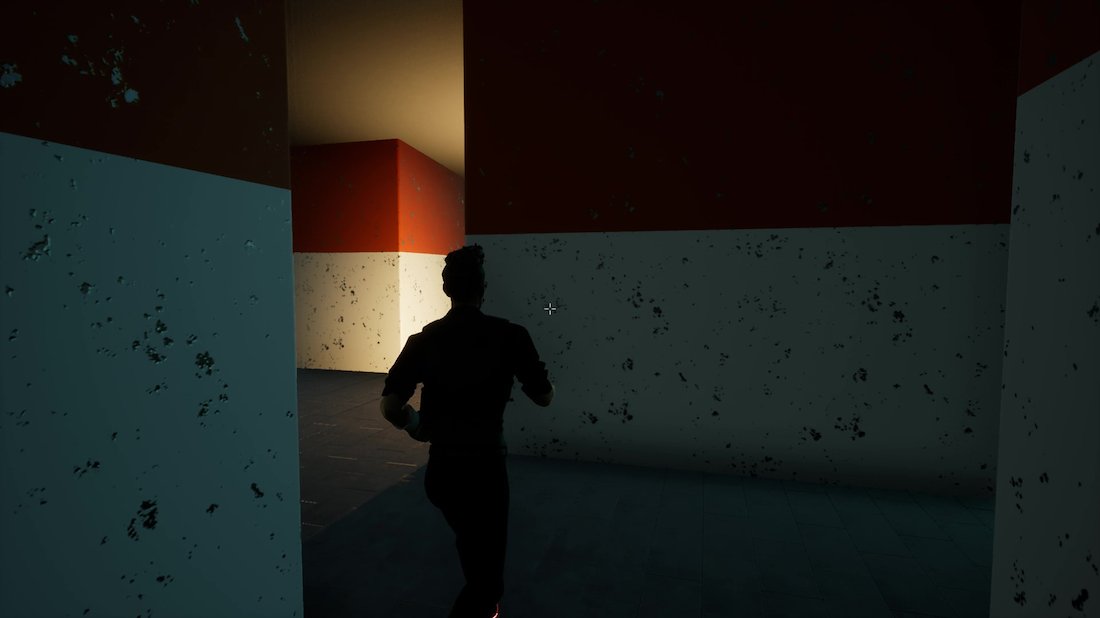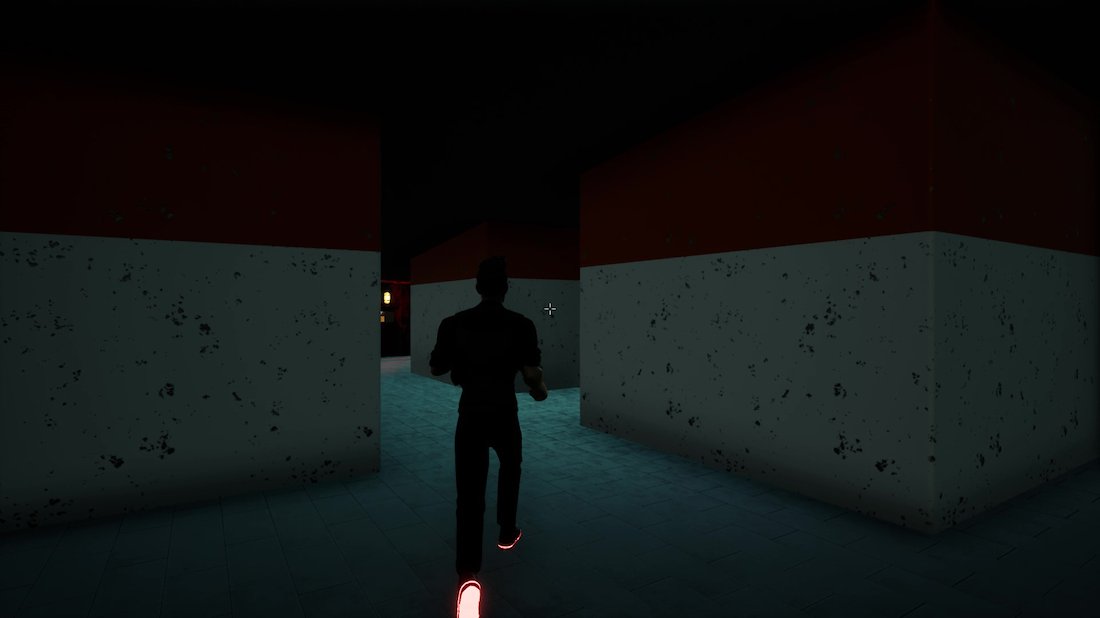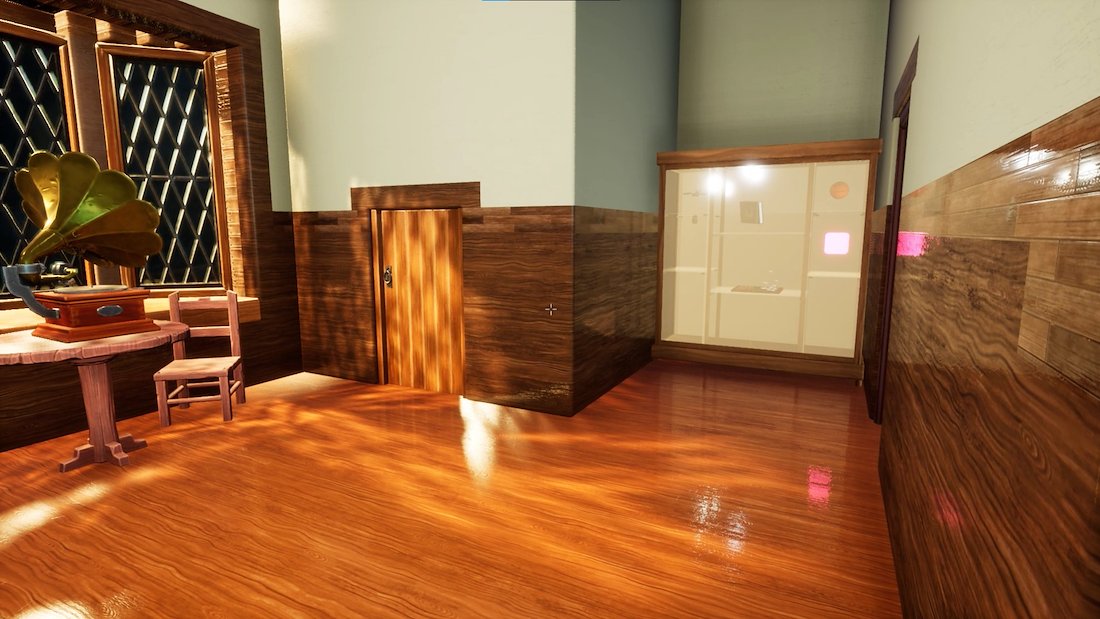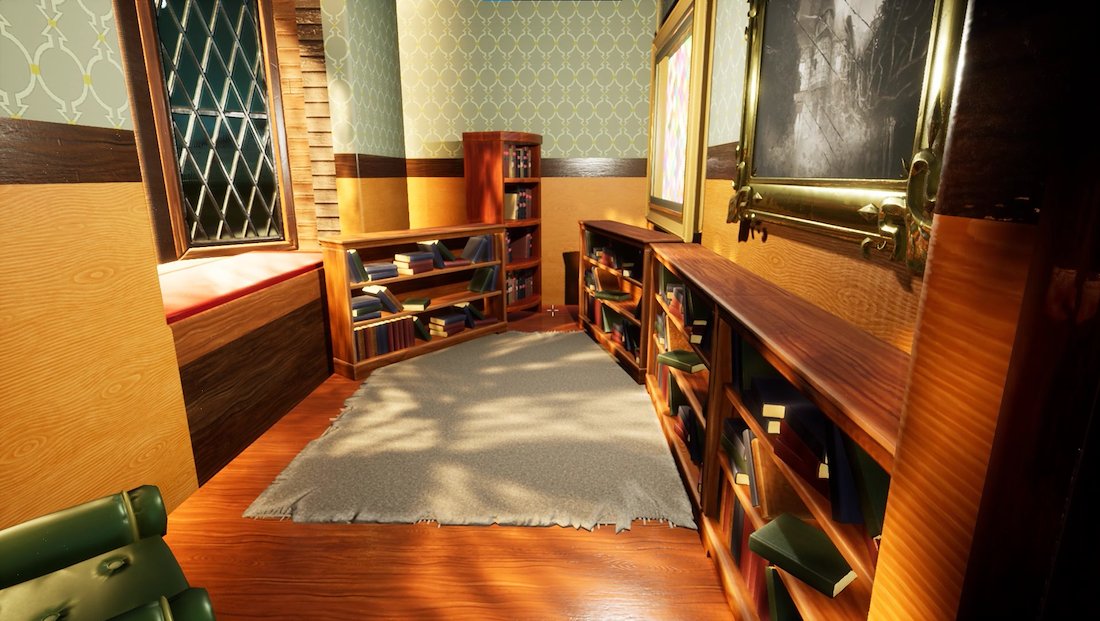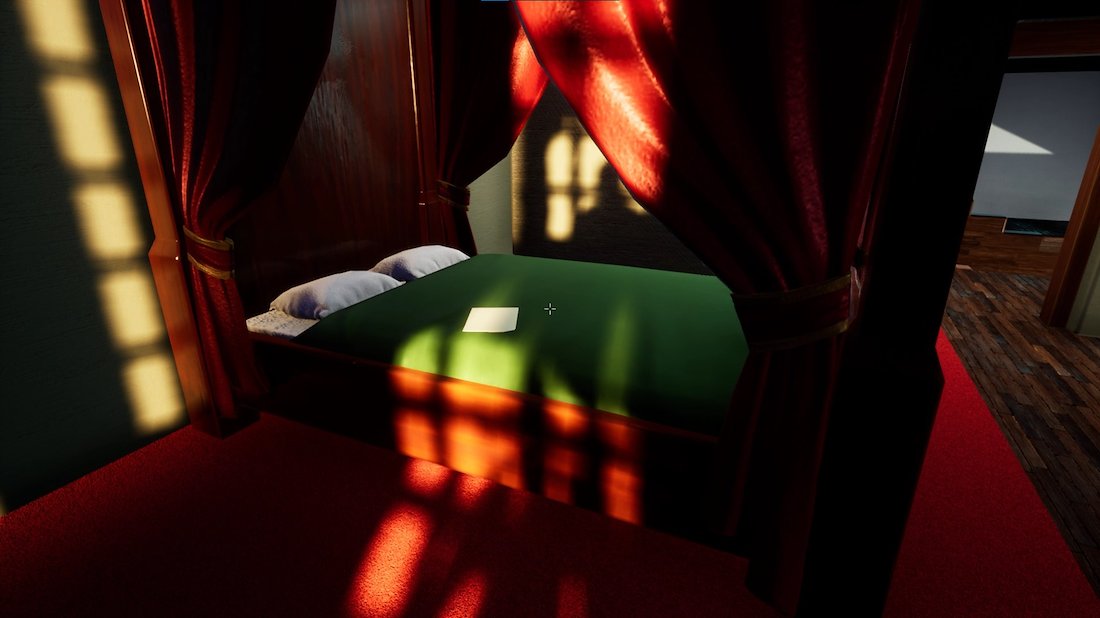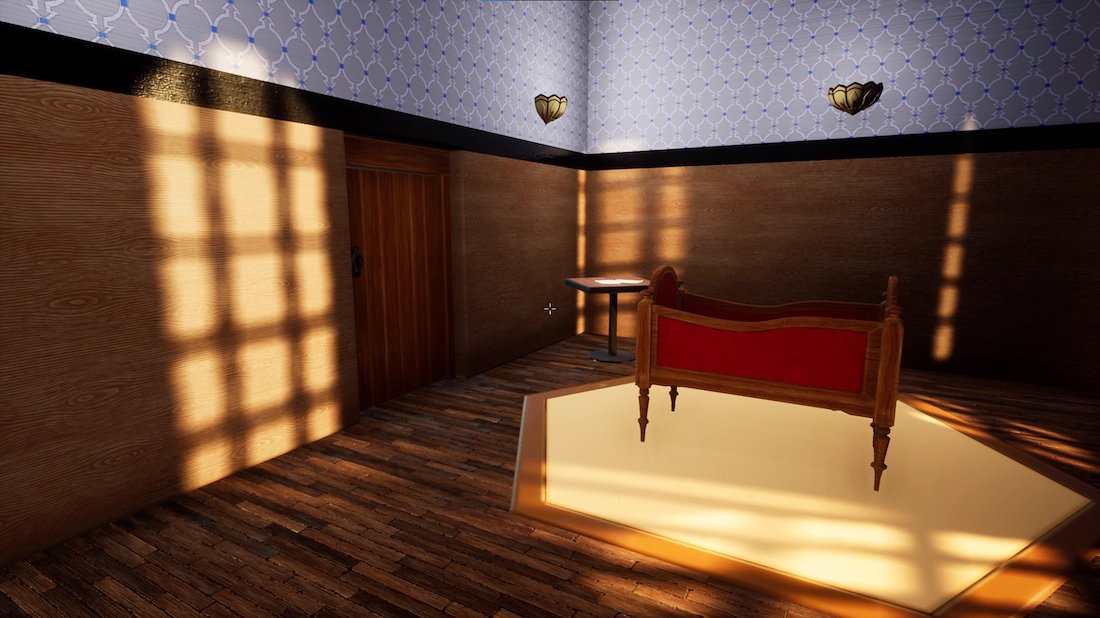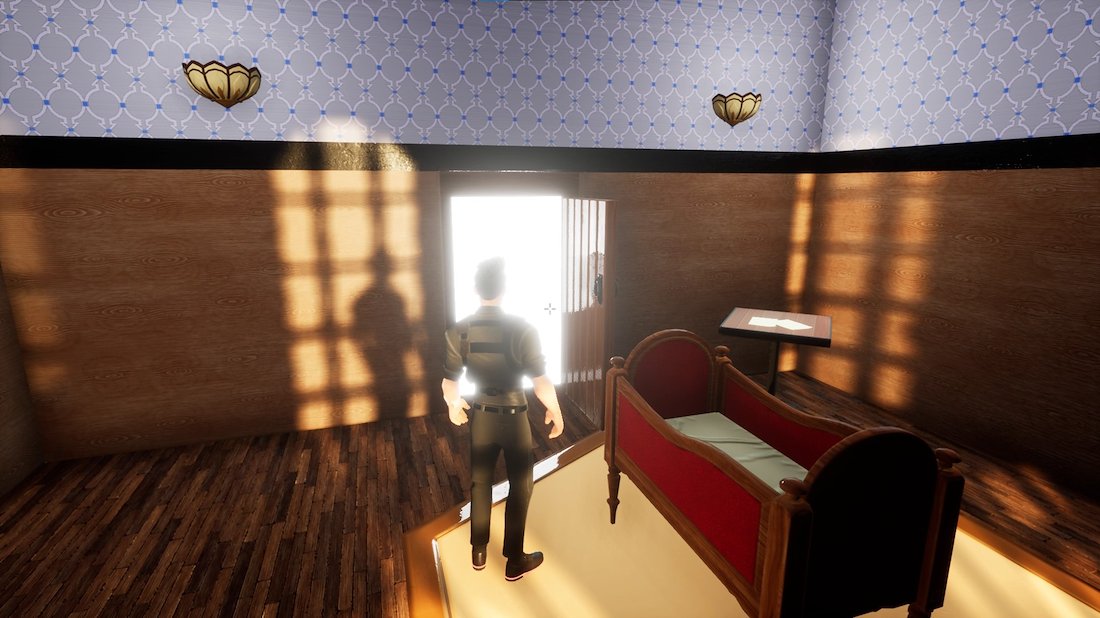(Game unavailable after 3rd March 2023 due to Crayta shutting down)
Showreel
Idea
For this game I wanted to try and create the feeling of unease that's felt when exploring an abandoned bunker, and make the player wonder what had happened there. At the beginning the bunker inspired by soviet bunkers, designed to be what a player might expect from exploring an abandoned bunker, but the further down the player goes, the more unusual it gets.


After finding players wanted to explore the woods, I added more lights to direct them down the hole, as well as invisible walls to make it clear nothing was hidden on the surface



Generator Room
The corridors require the player to crouch to enter, and wind as they go through. This is to force the default Crayta camera into first person, to enhance the feeling of claustrophobic, while the low ceiling is also accurate to how real bunkers often are.





Office
This room overlooks the shower room the player entered through. The one way mirror means the player is now aware they may be being watched. The green colour of light used both in this room and the office before draws attention to key information.





Original design
Originally I had wanted to do a central room with doors each leading to a different cell. However, this ended up not being interesting, and each cell felt tedious to explore

Chosen design
In the final design, the player first enters a room of pillars, and only later discovers they are cells. The pillars tower over them, and the regular sizes with different orientations creates a sense of disorientation.






The initial idea of the objects floating randomly. Adding form to the spiral made the scene easier to understand, and more interesting to traverse



Spiral
The pillar room was designed to feel intimidating, but also like it was human made. In contrast, this room breaks away from the grounded world. The entire room is bright white, contrasting the dimly lit bunker, and objects swirl around a central void above. To proceed, the player must climb up the spiral, and jump into the black void.

Down Again
The spiral up has random objects out of context. Here, the objects are together in small scenes, like parts of a room were ripped out and ended up there. Each scene had a note with a clue towards the story of the place on it.



Refuge
The only point in the game where there’s any plants, or food that isn’t rotten. The contrast between it and both the harshness of the bunker and the surrealness of the spiral suggests it’s created by someone who doesn’t belong there.



The Manor
At the lowest level, is a manor. This is designed to suprise the player, as it is completely different from both the bunker rooms and the white rooms seen up until this point. The view is revealed after going down a long, cramped staircase to make it seem even larger. Since the theme of the area is so different to the bunker earlier, the setting will be memorable to the player.


I used google sketchup to plan the layout of the manor and stylized it like a georgian manors. The lack of a front door or entryway is intended to show the player that the inhabitant would have been stuck here, with the only way in hidden
Dining Room
The holes around the room’s wainscoting can be looked through before the player enters the room, creating a feeling of being watched. The eye catching art on the wall is also a one way mirror that the player is later able to see from the other side (the style of the art on the wall was limited by crayta’s voxel choices, as it had to be a glass that was transparent, looking like it was art)

Hidden Rooms
The hidden rooms have a significantly different style to the rest of the manor, as they are lacking decoration and filled with medical equipment

One way mirror
Various one way mirrors reinforce that the inhabitant was constantly watched

Hidden notes
When the player investigates the out of place furniture, they will find notes hidden there. This was to suggest the inhabitant knew they were being watched

Final Room
After passing through the door, the player enters a void. Here, they meet the inhabitant and have the choice to release them or keep them trapped. The space is too bright to see details, leaving the characters as silhouettes.

